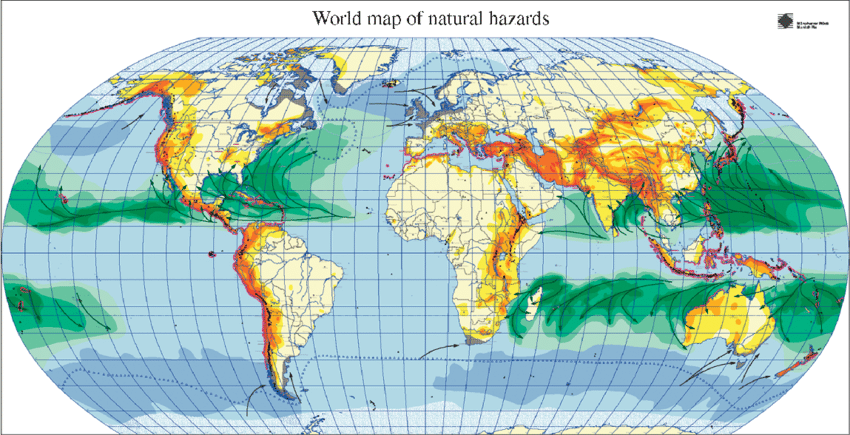What are Seismic Loads?
Horizontal seismic ground motions are the main focus for seismic loading. However, note that vertical ground motions also play a very significant role.
※ What are a Building Periods of Vibration? Explained in 1-Minute
When to Consider Seismic Loads?
In most parts of the world, seismic loading is not a significant concern if the project site is very far away from the boundary of a tectonic plate or fault. For example, in the United Kingdom seismic loads are generally ignored in building design.
Key locations of exceptionally large

In such high-risk areas, seismic loading can be as high as 100% of the building weight acting in the horizontal direction and therefore a critical design consideration.
How to Calculate
For
※ What is the Peak Ground Acceleration? Explained in 1-Minute
A very basic way to calculate the design base shear acting on the building is by multiplying this PGA by the building mass (F = ma). In other words...
Base Shear,
Where W is the building mass and Ag is the ground acceleration.
In practice, designing the building for this ground acceleration is impractical since the forces generated are too large and generate unreasonable member sizes. Therefore, this
Note that the ductility of the structure has to be guaranteed by appropriate structural seismic detailing. In general, special moment-resisting frames provide the greatest ductility (and therefore the largest reduction to the design seismic force / acceleration).
※ What is Structural Ductility? Relationship to Seismic Loading.
※ Structural Detailing Requirements for Seismic Loading. Summarised
After obtaining the base shear, the base shear can be distributed as effective static loads acting at each storey along the building height using established techniques.
※ How are Seismic Loads Distributed? Explained in 1-Minute
General Calculation Methods
Seismic loads are generally obtained using three different methods:
- Effective Static Load Prodecure
Response Spectrum Analysis Time-History Analysis
Of the methods presented above,
Things to Note
Note that seismic loads are considered to be purely inertial loads (they depend on the mass of the building). Since inertial forces are proportional to mass, a larger building mass means higher seismic loads. Therefore, structural engineers may occasionally try to avoid concentrating too much weight on the upper storeys of buildings in seismic regions.
※ What are Inertial Forces? Relationship to D'Alemberts Principle. Explained in 1-Minute
This article primarily focuses on horizontal seismic loading, but vertical seismic loading can be also be a significant concern (as much as 90% of the horizontal seismic loads).
※ What are Vertical Seismic Loadings? How are they Calculated?
Further Reading
We have provided some more reading topics below on this matter which might be of interest.
※ What is the difference between wind and seismic loading?